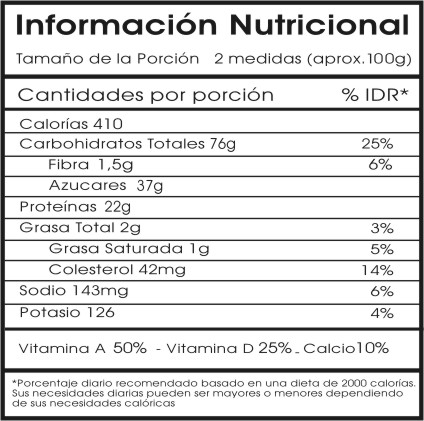Reading the information on food packaging seems like an easy task, but it is often difficult to interpret the data presented to us properly.
Not without good reason, the volume of concepts contained within the label is very broad: name or sales description, product name, name and address of the manufacturer / packer or importer, production batch, best before date/date of minimum durability or expiration date, storage, ingredients, trace amounts, alcoholic content etc.
Tania Mesa – Nutritionist and Nurse from Neolife
In order to maintain a healthy nutritional balance, it is vitally important for us to be able to read the product labels correctly and interpret the information properly.
We must read the nutrition labels of the products we buy and take home to ensure we understand what we are putting in our mouths and what food actually nourishes us. Most supermarkets have shelves full of foods that should be avoided: cookies, sugary sodas, precooked meals, sauces etc. in general terms foods that contain a mixture of sugars and trans fats. That is why it has become essential for all of us to read the nutritional information labels.
Food packaging provides can often provide very useful information, as it can help us select the ingredients that will form part of our diet and thus make a positive impact on our health. Reading the information on food packaging seems like an easy task, but it is often difficult to interpret the data presented to us properly. That is why we have shown you how to read and interpret these nutrition labels below:
Name or product name (sales description)
The label must clearly state the name of the product, a description of the product or the name of the product as known in the country of origin. The label must also indicate the physical state of the product or the treatment or process that the product has been subjected to, for example (powdered-form, frozen, smoked etc.). Under no circumstances can the name be replaced by a commercial brand or advertising message. 
Product name
Country of origin or place of origin.
Name and address of manufacturer / packer or importer
In the case of food produced outside Spain or the European Union.
Production batch
Used to indicate the sales unit set for the given food product produced, manufactured or packaged under practically identical conditions.
Best before date / date of minimum durability or expiration date
The first of these (usually written as “best before”) should be understood as the period during which the product retains all its properties, including organoleptic (flavour, colour, aroma and texture), therefore many consider this to represent the minimum duration date. On the other hand, the second of those listed above should be understood to represent the day from which consumption is no longer safe. This is commonly used on highly perishable foods. The information is completed with the appropriate storage instructions or storage conditions.
Conservation / Storage
The method used for storage is essential to ensure you have a healthy and safe dish. The reason this information is included is that there are certain products that once opened should not remain in the refrigerator for a long time or should be kept at a certain temperature so as not to risk contamination.
Ingredients
This usually appears at the end of the label and almost nobody pays attention to the ingredients listed. However, it is the most important part of the label, especially for those who are allergic or intolerant. The ingredients are listed in decreasing order (of value), that is to say, from the highest to lowest quantity. A widely used practice is to include different sugar types, so as to give the impression of reducing sugar content and as a result the sugar derivatives appear lower on the list of ingredients. This section includes additives and the famous “E” numbers, which we will discuss further later. The list of ingredients, unlike the nutritional information, is mandatory, except in those foods which consist of a single ingredient and those whose sales description is the same as the ingredient itself, such as fruit, vegetables, milk, cheese, vinegar etc.
Trace amounts
An important aspect for people with allergies, since a minimum amount can still affect you.
Alcohol content
This will be indicated only on foods or drinks where the content is greater in volume than 1.2%.
This article on nutrition labels will be supplemented by the next article which will be published on nutrition in the Neolife blog. In the next article we will talk about the nutritional information contained in product labels:
- Serving size
- Energy value (calories / Kcal)
- Fat content
- Carbohydrate content
- Fibre
- Sodium (salt)
- Calcium
- Daily value or DV%
- Preservatives and other additives.
